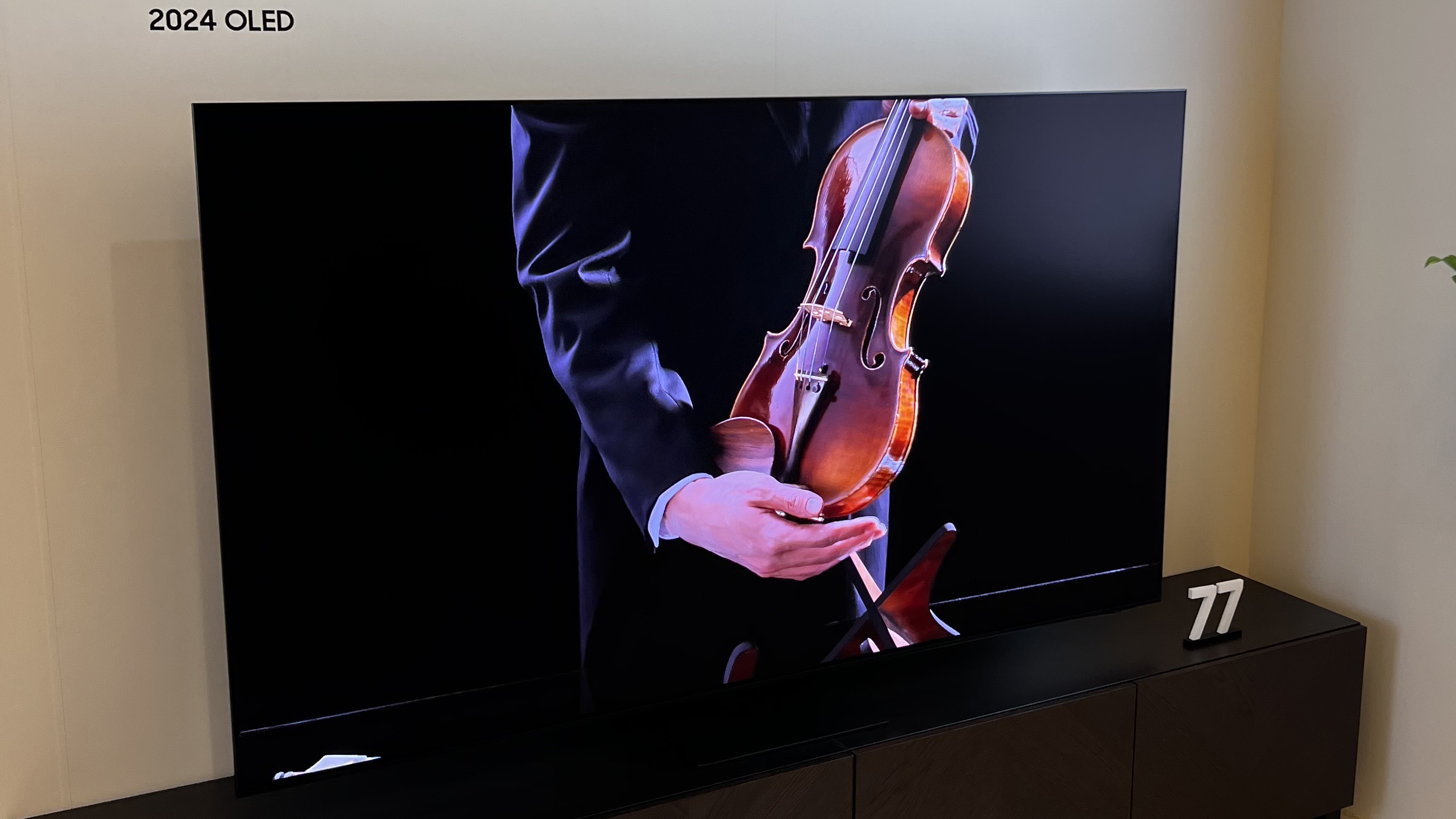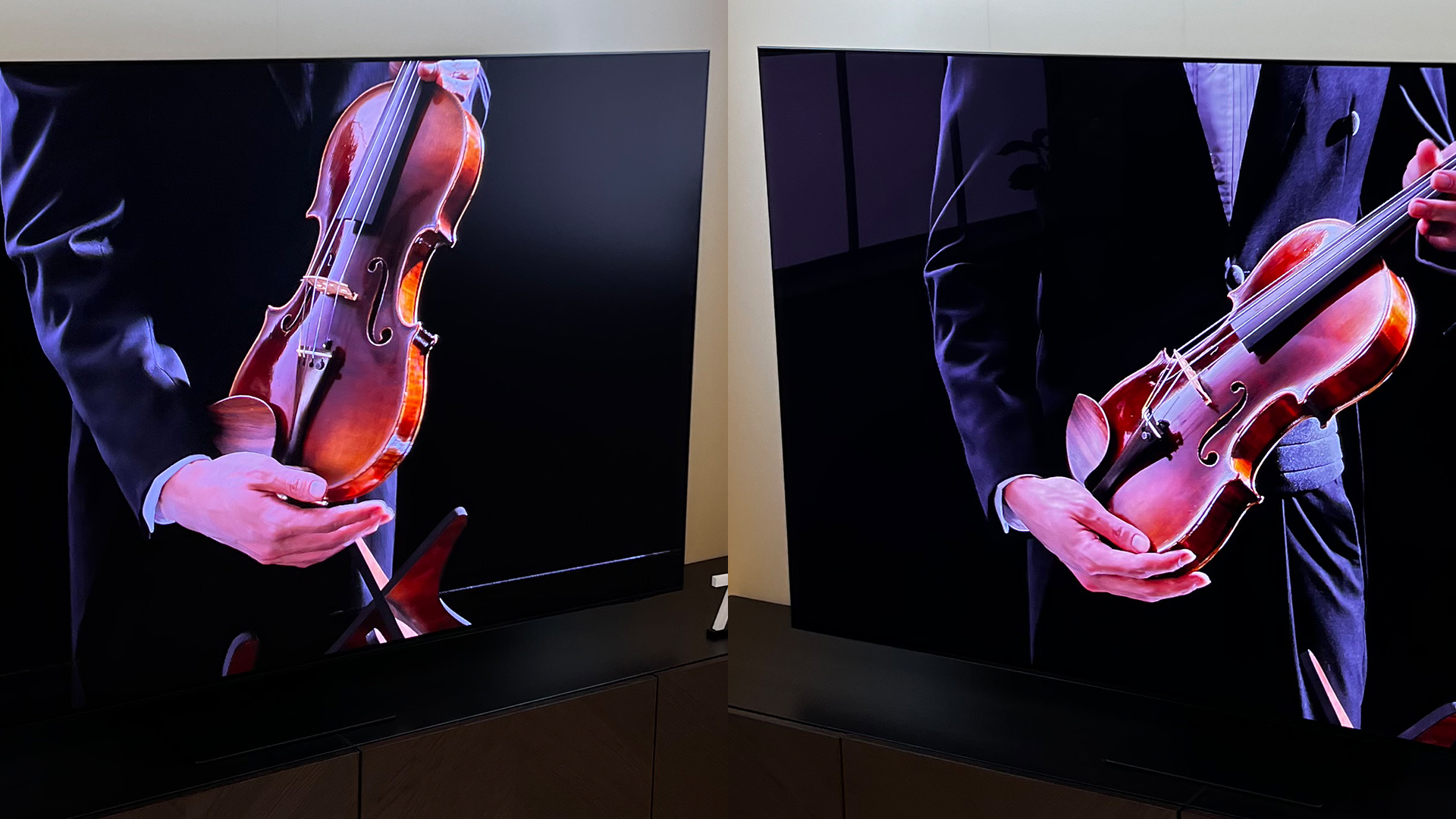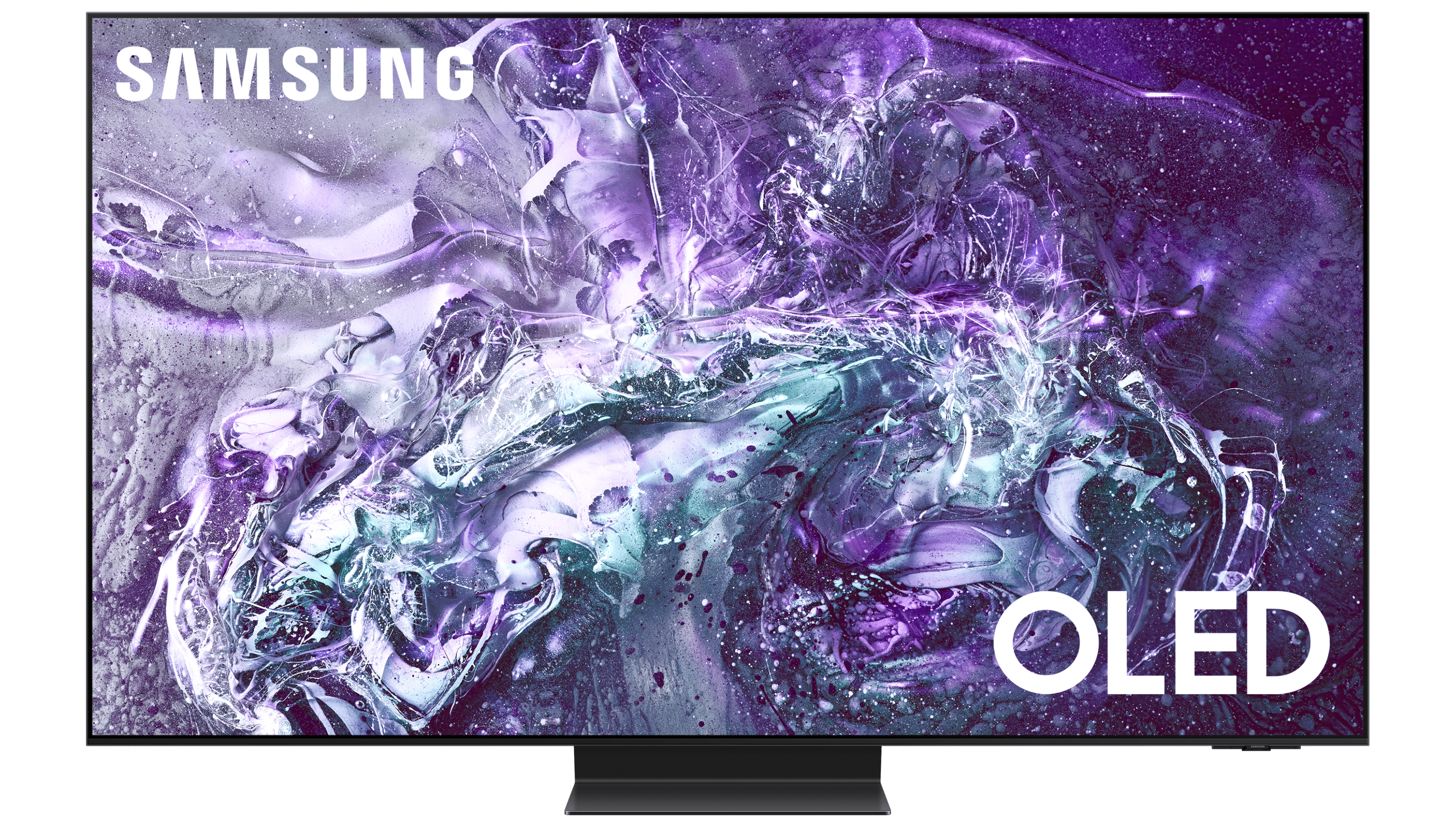Samsung S95D OLED TV: everything we know about the new 2024 QD-OLED
A new anti-reflection screen and everything else Samsung's confirmed

Samsung has unveiled its unveiled its 2024 OLED TVs, including the flagship Samsung S95D OLED TV, which has all of the company's latest and greatest tech, including a brighter 3rd-gen QD-OLED screen and a new anti-reflection coating to make it even more visible and vibrant. And after our short Samsung S95D test time at CES 2024, we can confirm its anti-reflection tech is as good as it sounds, it is indeed brighter, and it keeps a lot of the same great features from last year's model.
The Samsung S95D replaces one of the highest performing TVs of 2023, the Samsung S95C, which earned a top ranking in our best TV guide as our premium OLED choice, and was rated as the best for brightness in our best OLED TV guide – and for good reason. This is one seriously impressive TV with an incredibly bright and colorful picture, spectacular contrast and a whole host of features, especially for gamers.
We're going to look at everything confirmed about the Samsung S95D so far and include details of our experience of getting a look in-person at CES 2024.
Samsung S95D: Likely release date and pricing

Even though we've seen the S95D in person and had the specs and details about it, there has still been no official word on release date or pricing for the S95D, so we can only speculate based on what happened last year with the Samsung S95C.
The Samsung S95C was announced at CES 2023 last year and launched a few months later, in March 2023. That means it's a fairly safe bet to expect the Samsung S95D to also be available in the early spring of 2024.
As for pricing, although we haven't had any official confirmation of prices yet for the Samsung S95D's three sizes (55, 65 and 77-inch), we can make an informed guess based on the Samsung S95C's prices upon launch – which were as follows:
- 55-inch: £2,399 / $2,499 / AU$3,999
- 65-inch: £3,599 / $3,299 / AU$4,999
- 77-inch: £5,099 / $4,499 / AU$7,999
We'd expect similar pricing for the S95D, with the use of a new generation of QD-OLED panel and the anti-glare screen keeping prices at least as high, or maybe higher depending on the tech involved and the effect of inflation.
Sign up for breaking news, reviews, opinion, top tech deals, and more.
Samsung has however followed suit from last year and included a more toned-down screen for those looking to save some money, in the form of the Samsung S90D. This model will no doubt be cheaper, but you'll be missing out on the anti-reflection screen and some brightness.

Samsung S95D: Confirmed features, specs and upgrades
Perhaps the most exciting feature to be included in the Samsung S95D is what Samsung calls an 'OLED Glare Free' screen, an anti-reflection coating which it hopes will eliminate reflections, something that has been an issue for conventional OLED screens in recent years due to their dimmer screens.
It's again worth noting that this anti-reflection coating is only coming to the Samsung S95D and not the more entry-level Samsung S90D.
We've now seen the Samsung S95D anti-reflection tech in person and can confirm that it's impressive. As you can see from the image above (taken at CES 2024) the S95D's 'OLED Glare Free' screen reduces reflections to a barely visible shape in comparison to the Samsung S95C, where the reflected light is very clear as coming from a window, with defined edges that interfere with what you're watching. Making it more shapeless will mean your eye struggles to discern the reflection, so it'll be far less distracting.
Samsung also says the S95D will have higher brightness than the S95C. We've been told that the peak brightness for the 2024 QD-OLEDs would be 20% brighter than 2023's, with the S95D said to hit around 1,600 nits of peak brightness in a 10% HDR window compared to the S95C's 1,400 nits. We hope the fullscreen brightness will also be improved by around the same amount, but we don't have confirmation of that yet.
Although we have no official measurement for the brightness as yet, we can confirm that the S95D was indeed brighter than the S95C in person. In our 'eyes-on', the demo showcased the S95D's brighter tones on screen compared to the S95C, which also gave the perceived impression of deeper black tones and better contrast (although it wasn't actually darker).
During CES, a press release from Samsung Display said the company's third-generation QD-OLED panel could achieve up to 3,000 nits of peak brightness, and while Samsung has confirmed this panel is found inside the Samsung S95D, the company will not attempt to drive it to this kind of brightness levels. Just because a panel can do it, doesn't mean it's a great idea for a mass-market product…

In terms of gaming features, the S95D also has Samsung's updated Game Bar 4.0, which comes with a new AI Auto Mode that will use AI technology to adjust the settings to suit the genre of game you're playing, such as FPS, RPG and so on. The S95D carries over a lot of the gaming features from the S95C, including 4K 144Hz compatibility, AMD FreeSync Premium Pro and four HDMI 2.1 ports.
The S95D will also come with the same speaker configurations as last year, with 4.2.2 channels of audio. It will also feature Samsung's Slim One Connect Box, an external box that houses the processing and all the connections, with a single slim cable taking power and visuals over to the super-slim TV screen.
Although we don't have pricing or release date confirmed, we do know that the S95D will come in the same three sizes we expected: 55, 65 and 77-inch.
On paper, the Samsung S95D carries a lot of the same specs as the S95C, which isn't necessarily a bad things as the S95c was a fantastic TV. Once again however, there is no Dolby Vision support on the S95D. We still get HDR10+, HDR10 and HLG support, but the missing Dolby Vision support is disappointing.
One thing's for sure though; we can't wait to get our hands on the Samsung S95D so we can test it properly for ourselves to really test just how good this new OLED Glare Free screen is.
You might also like

Becca is a contributor to TechRadar, a freelance journalist and author. She’s been writing about consumer tech and popular science for more than ten years, covering all kinds of topics, including why robots have eyes and whether we’ll experience the overview effect one day. She’s particularly interested in VR/AR, wearables, digital health, space tech and chatting to experts and academics about the future. She’s contributed to TechRadar, T3, Wired, New Scientist, The Guardian, Inverse and many more. Her first book, Screen Time, came out in January 2021 with Bonnier Books. She loves science-fiction, brutalist architecture, and spending too much time floating through space in virtual reality.
- James DavidsonTV Hardware Staff Writer, Home Entertainment